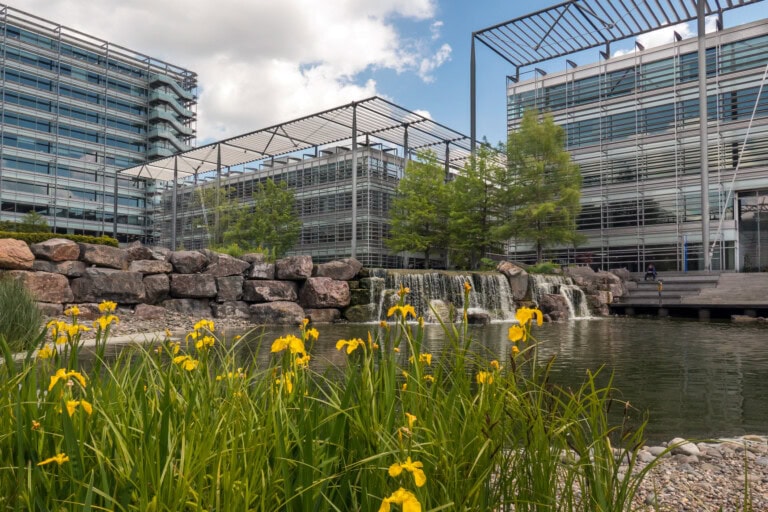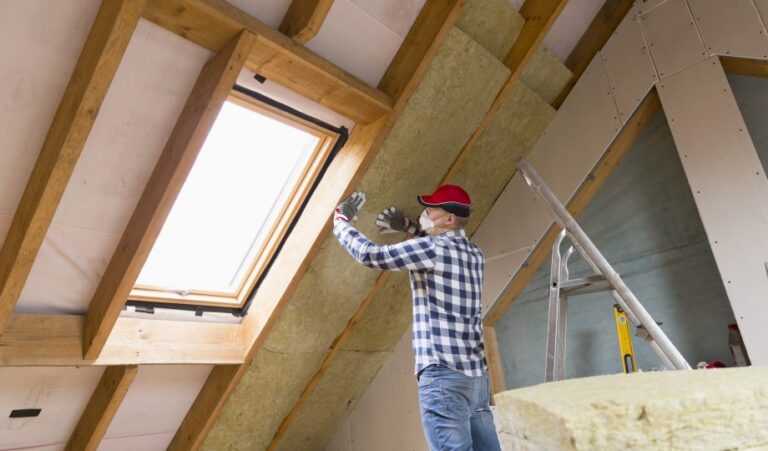Are we building liveable cities?

UKGBC’s Sophia Cox and Natalia Ford reflect on learnings from Open City’s hackathon event.
At Green Sky Thinking Week this year, UKGBC members Argent and BuroHappold came together at Open City’s hackathon to challenge a group of built environment professionals to improve the placemaking of an area earmarked for regeneration just south of Brent Cross Shopping Centre.
The workshop encouraged teams to each embody a different ‘persona’ and highlight any issues with the day-to-day liveability of the future neighbourhood, then propose place-based interventions that could help overcome those challenges.
Ideas ranged from constructing a living bridge to help a 23-year-old feel safe on her journey home, to the integration of a local business into the expansive park situated between the old and new housing developments. Although the specific ideas might not necessarily be adopted by the development partners, the workshop gave important insight into the challenge of making our cities liveable.
When it comes to regeneration, the stakes are high
Done properly, neighbourhood-level development can support city growth and build thriving communities. But there are a number of difficulties that developments of this nature must confront, especially considering the quantity and, more importantly, the density of schemes popping up around the country. Much like agriculture, when we develop large swathes of the urban landscape rather than letting it grow organically, building by building, the resulting architectural ‘monocultures’ tend to be less successful. Additionally, Brent Cross South, like most urban regeneration sites, comes with its own unique set of challenges: the developable area is bound by large motorways and houses a hotchpotch of different communities. With such high stakes, properly addressing the details which make our cities liveable becomes critical.
Small interventions can have the biggest impact
While the plans presented by the groups were exciting and well thought out, the judges were concerned that many fell into the trap that the solution is always to ‘build another building’. In Brent Cross South an identified risk to the wellbeing of future residents is a perceived lack of safety. A smaller intervention, such as clear wayfinding, has the potential to have a bigger impact for a smaller cost than building and maintaining a new building. Another suggested smaller intervention was to develop a landmark clock tower in the town square, which would be a welcoming point of reference for people visiting the area and would help to build community pride.
Delivering people-centred sustainability is tougher than it sounds
The teams spent a considerable time developing the characters of their assigned personas before considering potential interventions. The backgrounds and aspirations of four characters were considered in detail, and then brought to life by walking through their typical day. The idea was that the more we immersed ourselves, the more likely that the future residents would be at the front and foremost of any design interventions.
However, it is telling that the persona the judges felt had been most successfully embodied was by the team of 20 something female graduates, who had been assigned… the persona of a 20 something female graduate. It is unsurprising, but worth appreciating, that the empathy that is required from a predominantly white and middle class industry to fully appreciate, and design for, the challenges felt by a different community is an area in which we fall short.
Placemaking is only as good as our ‘place-keeping’
Why does placemaking fail? Often the beautifully designed spaces proposed in masterplans fail to stay the way they are illustrated in the masterplans. Sometimes this will be because the intended purpose of the space is undermined by unforeseen forces, for example, wind tunnels destroying the tranquillity of an outdoor café. But, in most cases, it is due to neglect and a lack of foresight. Our urban environment is not static: plants die, buildings get dirty and benches are vandalised. Keeping our communal spaces well maintained is therefore essential to good placemaking, and for that to happen, the most important thing is to ensure there is a clear funding mechanism for maintenance from the start.
The challenge of innovative thinking
The tendency to suggest a building as an intervention demonstrates how hard it is for us to break out of our various disciplines. To misquote Maslow, it turns out if all you’ve got is built environment expertise, then everything looks like a potential building. It also shows how we are naturally inclined to jump straight to a physical, tangible solution. During the ‘breakthrough innovation’ project we run at UK-GBC for industry Future Leaders, many of the participants squirm as they are made to sit on the ‘edge of chaos’ and focus on the problem without jumping to a solution. Yet developing this process of innovative thinking is what the industry desperately needs in order to address the challenges of sustainability.
The built environment industry would almost certainly benefit from more workshops like this. Initiatives of this nature can equip developers with more foresight; more diversity of people and thinking; more lived experiences; and more empathy and more familiarity with that discomfort of wrestling with a problem. Understanding the people is part of understanding the place. We should be much better at this if we are to create better places that work for everyone.
Related
Storms, climate change and how we make our cities resilient

Sustainable Construction for the Sustainable Development Goals

Fixing the Competency Gap: Moving Beyond Qualifications in Domestic Retrofit

UKGBC Members visit Coal House in Cardiff

